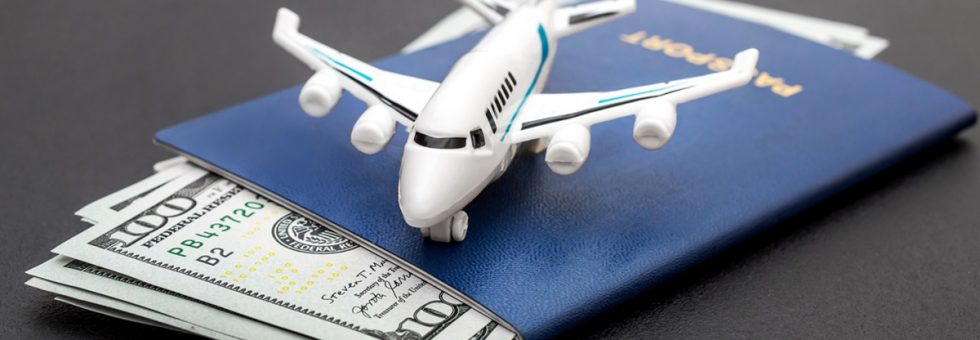
The Unsung Economic Giant: The Tourism and FX
Tourism is not all that much about leisure, but it is a very important branch of an economy to many nations. In 2023, the industry generated nearly 9.1 percent of the total GDP of the world or more than 9.5 trillion as per the figures of World Travel and Tourism Council (WTTC). That is why tourism is not a minor source of macroeconomic and FX activity but one of its most influential forces.
When a foreign tourist is visiting a country of his destination, the tourist exchanges money of his home currency into the currency of the destination country. It attracts a lot of demand of local currencies, and in most cases, it could experience appreciation, especially in the countries where tourism contributes much in GDP. These inflows of the currency are more than associated with letting in the liquidity into the country; these inflows also help the country in boosting its current account and its investor confidence.
It may be highly noticeable in countries with 10 percent or more dependences on tourism as a share of national output i.e. Thailand, Greece, Croatia, the Maldives and regions in the Caribbean. In addition, appreciation in currencies as the tourists seasons are at their peak may also bring about relief of inflationary situations as the foreign goods are cheap hence consumable.
Case Study: Thailand- Seasonal FX Player
Thailand can be discussed as a textbook case of standards of tourism effects on the performance of the currency. Based on the research carried out in 2019, tourism brought around 20 percent of the gross domestic product of Thailand. Even though traveling was disrupted in 2020 and 2021 due to the pandemic, it has made a severe rebound with the reopening of its borders in 2023 and 2024.
Tourist inflows increased by 60 percent on a yearly basis in Q1 2024 and the number of foreign tourists was more than 8.5 million. This has made the Thai Baht reap an appreciation of about 4 percent with regards to US dollar during the same period. The appreciation occurred in normal seasonal terms with the highest inflow and currency movement in the peak season of tourism between November to March.
But with this kind of dependence there is the volatility as well. Reverals may occur due to political instability, change in a visa policy, or some health crisis (such as COVID-19 or monkeypox outbreak). Foreign exchange (FX) earnings associated with tourism may as well evaporate as quickly as it materializes.

Case Study: Turkey – High Inflation against Tourism Backing
More complicated is the situation in Turkey. Turkey has received almost 49 million tourists and earned more than 45 billion dollars despite macroeconomic instability and inflation over 50 percent that is expected to hit Turkey in 2023. This massive oxidation of the hard cash like EUR and USD acts as cushion to the Turkish Lira.
Between June and September which are peak travel months the Lira is likely to stabilise or slow down in depreciation. As an example, Lira has been more stable in summer 2023 than at the beginning of spring, even though the issues in the domestic economy remained. This explains how visceral inflows in FX markets can always beat a weak fundamentals.
But the development of tourism can only slow down, but not impede general economic trends. After the expiry of the season, the Lira normally reclaims its downward trend.
Japan and the Weak Yen: The Weak Yen is the story of a tourist rush
The rebound in the inbound tourism into Japan has once again happened, because of the historically low Yen in 2024, which had reached new low multi-decadelow. This has ensured that Japan becomes one of the most popular tourist destinations to be visited by US, Europe and the mainland of Southeast Asia.
The country had received more than 3 million foreigners in April 2024 only, the highest denomination ever registered. The retailers, the hoteliers and in-fact restaurants too were recording all time profits, whereas FX analysts had opined that higher footfalls will mean small intraday appreciation on the Yen.
When the central bank continued to have an ultra-loose monetary policy, tourism contributed towards removing a portion of balance of payments pressure although one should not miss the point with a depreciated currency the FX inflows may actually come in form of tourism.
International vs Domestic tourism – Does It make a difference?
Whereas international tourism injects the foreign currency, the domestic tourism moves mostly the currency within a given economy. It will directly affect the international tourism and inform the domestic tourism, but internationally, on the part of the FX world, tourism will affect GDP but not the fund strength.
Getting an example, such countries as the US and China have a more domestic travelling and it contributes to the stimulation of the consumption but does not result in further demand of the local currency on the global FX market.
By comparison, the tourist FX inflows are relatively high in the earnings of smaller economies at about 90 percent for the Maldives or Seychelles, where the greater share of the tourism relates to overseas contributors. This renders their currencies as more exposures to the global travel patterns, flight habits and diplomatic relations.
Business implications: FX Risk preparation of Tourism-related economies.
It is important that the companies with the operations/suppliers in the economies where tourists accumulate in large numbers understand tourism seasonality. Companies having tie-ups with local vendors: be it the textile manufacturers of Turkey or the hotel chains in Thailand, should be considering the FX trends in their procurement and pricing decisions.
As another example, a UK based travel agency which paid suppliers in Baht or Lira would be able to get better rates by timing conversions, to when the currency was low.Similarly, other businesses will receive flow of revenue through incoming tourists and they might desire to buy revenues flows against anticipatory off-seasons depreciation.
Proactive FX strategy does not just imply that the company is able to respond to tourism boom but it is also gets ready in the face of a dip triggered by travel restrictions, weather factors, or health-related scaremongering.
The Way KeyFX Can Assist Corporates to Deal with Currency fluctuations that are Based on Tourism
KeyFX provides customized services to those businesses with an exposure to currency risks in the high-volatile or tourism-affected markets. As for forward contracts and multi-currency accounts, our solutions can keep you on the safe margin and flexible.
We understand the market and have been proven advisors who can keep our companies up to the minute on FX conditions thus enabling companies to know what to expect when and plan down to the last minute.
Your bottom line should not be borderline on a guessing game and this is where tourism should not be used as a guessing game. KeyFX provides you with opportunities to be ahead of the currency risk all through out the year.
The effect of tourism on FX is not only a niche issue anymore, but it is an essential topic in planning the global business. Are you ready to know how seasonality trends can impact on your FX exposure?

By the time normal movement of people all over the world is restored, the currencies of the countries that are dependent on tourism will question. Take the Thai Baht and the increasing number of tourists into the country or the Yen and the tourists thronging into Japanese cities, the FX market has its fair share of connectivity with the tourist in-flows.
With the patterns and strategies in place, the businesses will be safe against such risks and they may even use the tourist trends to give them an advantage. And when you have professional help to rely on such as what KeyFX has to offer, dealing with those complexities becomes easier, quicker and wiser.
A post-COVID tourism trend: FX and a recovery are back
Due to the COVID-19 pandemic, the world tourism industry was halted in 2020 and the number of international arrivals decreased more than 70%. The impact of this collapse on the FX markets of countries which are hooked on tourism was eminent. To use an example, Thai Baht entered a sharp depreciation in 2020, and the Turkish Lira simply lost a lot of its value due to the loss of tourism revenues.
When borders reopened and vaccination campaigns came into effect in 2022 and 2023, tourism started recovering again providing a second life to economies that had been stagnating during the years of the pandemic. Such countries as Greece, Morocco, and Indonesia managed to reconcile with the pre-pandemic levels of visitors in 2024.
The FX markets reacted appropriately: Moroccan Dirham and Indonesian Rupiah performed better in the current season, indicating the resemblance of the tourist growth to a currency performance. This recovery, though going on is an indicator of how fragile and important tourism is to financial stability of the national currencies.
Greece and Spain- summer currency boosters in Europe
Greece and Spain are the best examples in Europe of seasonal FX flows which are caused by summertime tourism. In Greece, tourism employs more than 20 percent of the GDP, whereas in Spain, the number of tourists visiting the country annually is above 80 million of which is 12 percent of the total GDP.
Every summer, the euro gains a little and then demand rises in the markets and this is especially during the time the tourists are exchanging the various currencies such as pound, dollar and others into the euros. The tourist season tends to record a higher liquidity in the local banks and FX providers.
Euro is a common currency, nevertheless, the centralized economic activity in the countries may affect the demand in the region. When dealing with business in the Mediterranean Europe, the pricing and FX transactions are regularly scheduled taking the tourism pattern into consideration.
Mexico – Remittances and tourism as the two terms of exports
In Mexico, the case of FX is a peculiar one as tourism as well as remittances are the two main motors of a successful peso. Mexico has received more than 40 million foreigners in 2023, mostly the US and Canada visitors. Meanwhile, the highest run of remittances of $63 billion was achieved.
Exports of tourism are an incursion of FX which is seasonal and in the case of Mexico, Cancn, Los Cabos, and Mexico City, this is particularly true though remittances are a more reliable source of support. All these have combined to ensure that the peso has done well than expected even with the inflationary forces.
Multinational corporations that deal with Mexico as an exporter or importer should address such FX moving factors in terms of hedging their plans.

The Analysis of Tourism Indicators as a Means to Forecast the Currency Movements
To adequately be prepared by a business on the dynamics of the FX, the following are some of the key indicators on the tourism industry: – International arrival rates form national statistics organisations Bookings of hotels and airline travel statistics on a seasonal basis Changes in the policy of visa issuance and flight warnings The exchange rates against the tourism competitiveness
An example is that deteriorating currency can make destination more attractive than it used to and encourage future reservations which will be appreciated at a given time later. The tracking of forward data enables the financial departments to be able to plan and anticipate the exchange of currencies.
